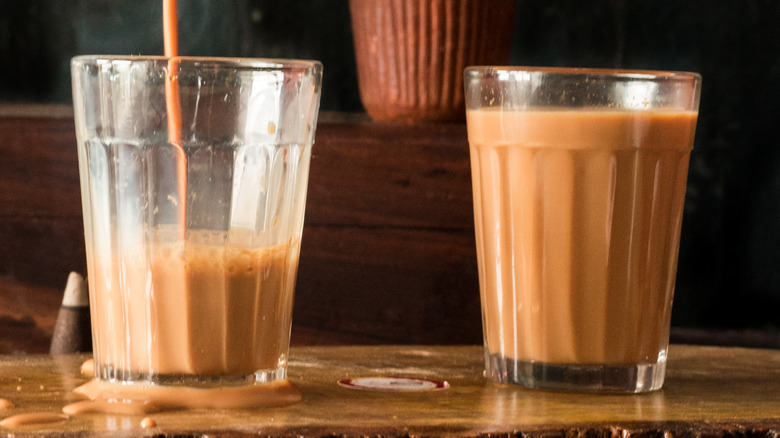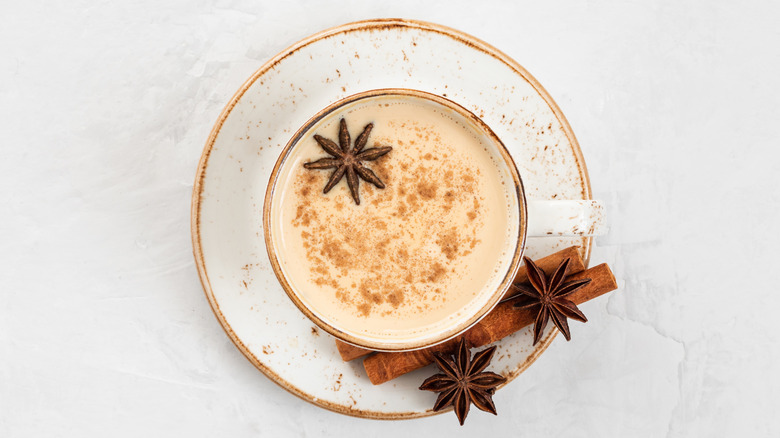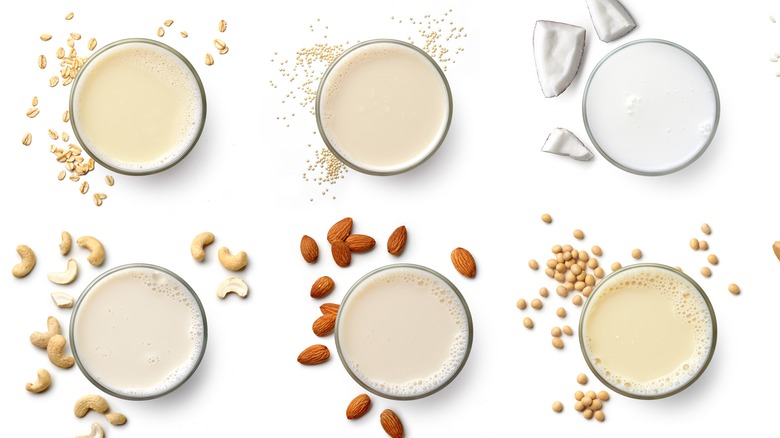The Proper Milk You Should Be Using When Making Chai
Sipping on a steaming hot cup of masala chai can feel like a luxurious experience. The frothy milk, warming spices, and rich tea might feel like something high-end and reserved for celebrations, but it was originally made as a way of cutting costs.
The earliest form of masala chai was a spiced warm beverage that was enjoyed by royalty as an ayurvedic practice. True masala chai wasn't invented until the 20th century. After British colonists took control of India and started producing mass amounts of tea, the drink was marketed to the locals by the British-owned Indian Tea Association. Tea became more popular, but tea leaves were also still an expensive ingredient. Vendors made their brews using less tea as a result, but offset the flavor with milk, sweeteners, and spices, and the masala chai was born.
Today, chaiwallas (tea vendors) can be found selling the drink all over India, and it's been exported overseas to become a common international drink as well. If you've ever wanted to try making your own at home you've likely come across countless explanations of how to make chai tea. There are a ton of different ways to brew this flavorful drink, but one of the most important qualities to get right is to use the proper milk.
The best milk for making chai
When making your own chai tea latte at home, it's important to make sure you're using the proper milk. Whole milk is the best to bring all of the flavors out of the spices when brewing your tea.
This is likely because fat tends to hold onto flavors. When boiling whole spices in whole milk, the flavor compounds and oils in the spices will bond to the fat and carry more of the robust flavors with it into the tea. That higher fat content also brings its own rich flavor to the drink that can hold its own against the strong spices.
Whole milk is also the best milk for frothing at home. Milk's high protein content allows it to foam and froth fairly easily. Its higher fat percentage also gives it a more full body and better overall texture.
Chai vendors in India will also use evaporated or sweetened condensed milk in place of fresh milk because it is less expensive. These more concentrated versions will give your chai tea an even deeper, caramel-like flavor that will appeal to those who have spent time traveling in India before.
Is it possible to use substitutions
While whole milk is the preferred beverage for frothing up a masala chai, there are still plenty of people who are either vegan or lactose intolerant that won't be able to partake in dairy milk. Luckily there is still an abundance of non-dairy alternatives that complement a chai tea latte.
One of the main qualities of dairy alternative milks is that they will bring their own flavor to your masala chai. Drinks like almond milk, oat milk, and coconut milk will bring their own rich flavors to the drink that will complement the flavors already found in it. Others, like soy milk or hemp milk, will bring a more earthy flavor that some find pleasing, but these drinks might not stand up well to a traditional dairy masala chai.
When it comes to the froth though, lots of non-dairy milks still hold up well compared to whole milk. Oat, almond, and soy milk all have fairly high protein and fat content. They're probably the three best options for trying to match whole milk's texture. It's best to get barista-quality oat milk, though, if it's available, as this extra-creamy version will have more body than the standard.


